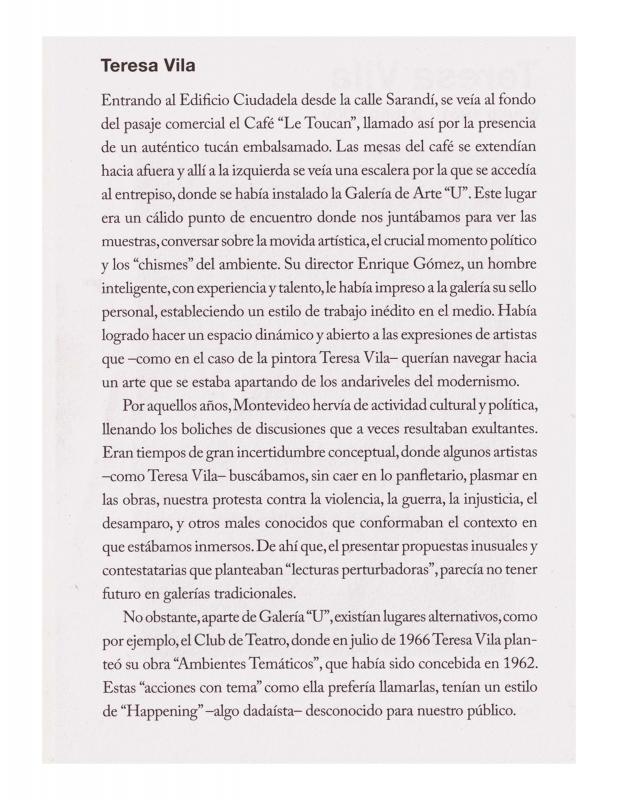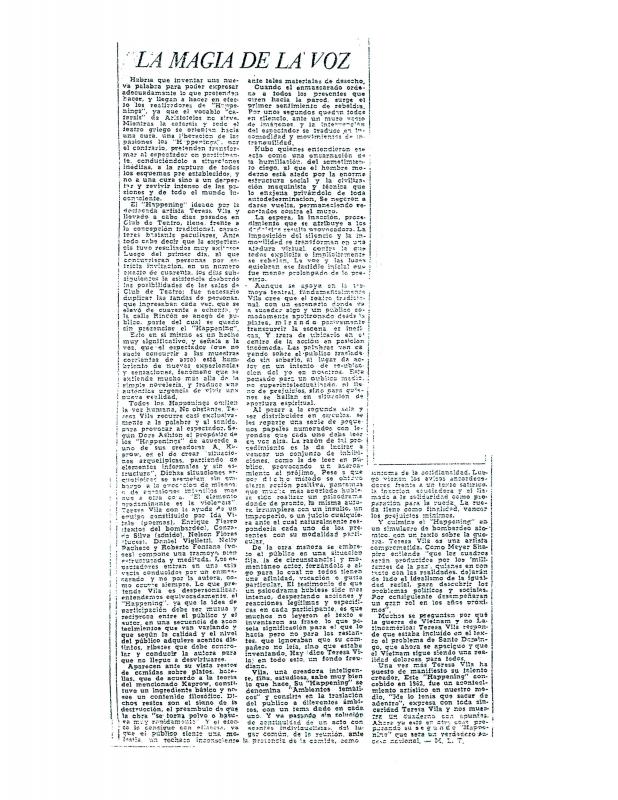The vanguard of the sixties in Uruguay and other Latin American countries (still with strong ties to the artistic elites of the west) reflected a social and territorial sentiment corresponding to anti-imperialist ideas that united the political field giving rise to new explorations of the cultural environment. During this period in Uruguay, some emerging artists fled from the elitist concept of “art,” marking a rupture with the traditional value of the artistic object and carrying out practices understood as closely connected vehicles between “art and life.” Experiments began with action art, which little by little, would finally acquire a leading influential role in politics and media in Latin America. Happenings, performance, and installations were held that (consciously or unconsciously) recalled the artistic stagings introduced in Futurist events or Dadaist sessions during the early twentieth century. In the Rio de la Plata region, artists such as Argentinean Marta Minujín (b. 1943), the Uruguayans Clemente Padín (b. 1939), and or Teresa Vila (1931–2009) turned to performance as a way of or instrument for the construction of another type of subjectivity, via irony, either through questioning “the instituted” or through the vindication of minority rights.
[Please refer to the ICAA digital archive for the following texts on the subject: “Las veredas de la Patria Chica. Exposición homenaje a Teresa Vila,” by Haroldo González (doc. no. 1249835); and “Acción para meditar” (doc. no. 1250336), and “La magia de la voz,” (doc. no. 1250311), both by María Luisa Torrens].



